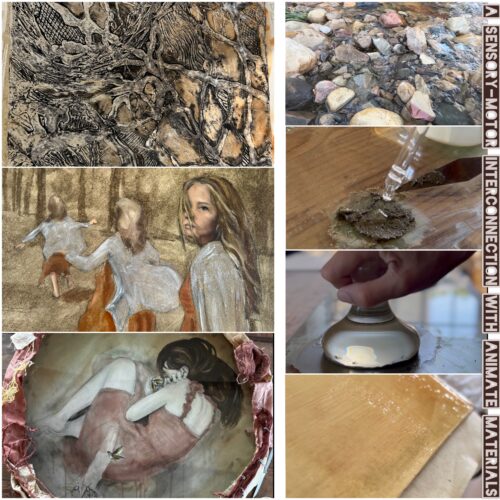
Showtime!
This is a post from the weareoca.com archive. Information contained within it may now be out of date.
 In the next few weeks art colleges all over the UK will throw open their doors and invite the public to see work of their final year students. Yes, it’s Degree Show time again.
In the next few weeks art colleges all over the UK will throw open their doors and invite the public to see work of their final year students. Yes, it’s Degree Show time again.
If you’re working towards a degree in any of the visual arts, I recommend you take time to find out when a local institution is having its show. If you want to go to the opening it’s unlikely you’ll be turned away as institutions want people to see what they’re about. These events are, however, usually packed with students and parents, but the buzz can be incredible. Seldom are the location of exams so much fun. After the dust has settled on the opening night, it’s likely that the show will be open for a few days and they’ll be delighted to see you. It’ll be much quieter and the work much more visible. However, if you go the morning after the opening, don’t be surprised if the invigilators are less than feisty.
Wandering around a Fine Art degree show can be a bewildering experience.* Up to fifty or sixty students might be displaying work in a dazzling array of styles, employing all sorts of media. Remember, that what you’re looking at are exam submissions and it’s possible that some will be struggling.
So, how to navigate looking at so much work, about which you probably know nothing? That’s a key point actually, and worth reiterating. We seldom get the chance to see work that is completely new to our eyes. Most shows we see are reviewed in the paper, covered on The Culture Show, or recommended by friends. There’s likely to be a curated theme to group shows, or at least a way in, via a text or an historical moment. The Degree Show might be one of the last chances to respond instinctively to sensual experience.
To make the experience easier, you might want to focus on a few strategies that will help:
- Does a theme emerge? Often cohorts of students become heavily involved in each others’ work which provides common reference points. These could be art historical (lots of Minimalism or Expressionism, for example), or subject-based (I wouldn’t be surprised to see a lot of politically inspired post-Occupy work this year).
- Can you identify works that have been heavily influenced by an artist you do know? Once again cohorts can all discover an artist together (or have an influential tutor), who provides a spine or look for the work.
- Imagine you’re in the show. Which spot would you choose and whose work would you want nearby? Why?
- Which piece would you take home?
- Even if you don’t like or understand the work on display, find something you can take from it. How is the work hung? Is the accompanying catalogue good? Is anyone using a palette or method you envy?
- Think about moving through the space and noticing how works reveal themselves.
- Have a look at how works have been made. What techniques are in display? Can you appropriate them for your own practice? This isn’t plagiarism. No-one accuses painters of stealing the idea of oil painting from Van Eyck.
- Imagine you’re a curator and you’re putting on a ‘best of’ show. Whose work would you select? Why? What would you call the show?
- Look at the scale of works and imagine working that big (or small). Student work is often ebullient and bold. Ambition is prized and students are often pushed towards making work that really grabs the viewer. This might be at the expense of a quiet elegance, or technical mastery. There’s likely to be someone who’s made something delicate and engaging, though. Find that. Contrast is a good thing to look for and a strategy for being noticed.
Taking photographs in unlikely to be frowned upon, so don’t be afraid to take some pictures for your Learning Log. Write notes while you’re going round. You won’t remember everything.
And, as implied in the last point, write something in the Learning Log. It needn’t be long or complex, but don’t stop at saying ‘I liked so-and-so’s work’. Tell your log why. This will help you understand why, too.
I look forward to reading all about your experiences in the Coffee Shop forum in the OCA student site.
*it should be pointed out that other Degree Shows – Photography, Textiles, Graphic and Product Design, Games Design, Illustration, Fashion and so on, are also available.
[Image Credit: Davy Gibbons, used under a Creative Commons Licence]






Thank you – this is really helpful. I plan to got my first degree show in June and I had been warned that I might feel totally bowled over and totally useless but this is really constructive help
There’sa directory of degree shows on the a-n site. I don’t think you have to be a member to access it: http://new.a-n.co.uk/news/single/just-published-a-n-degree-shows-guide-2013/1
Am off to the Duncan of Jordanstone degree show in Dundee where my son is graduating just as I start my course at the OCA. Good advice in this post
Thank you for this. I am going to the Edinburgh College of Art Degree Show with fellow students and tutors and now have an idea of how to view the show.